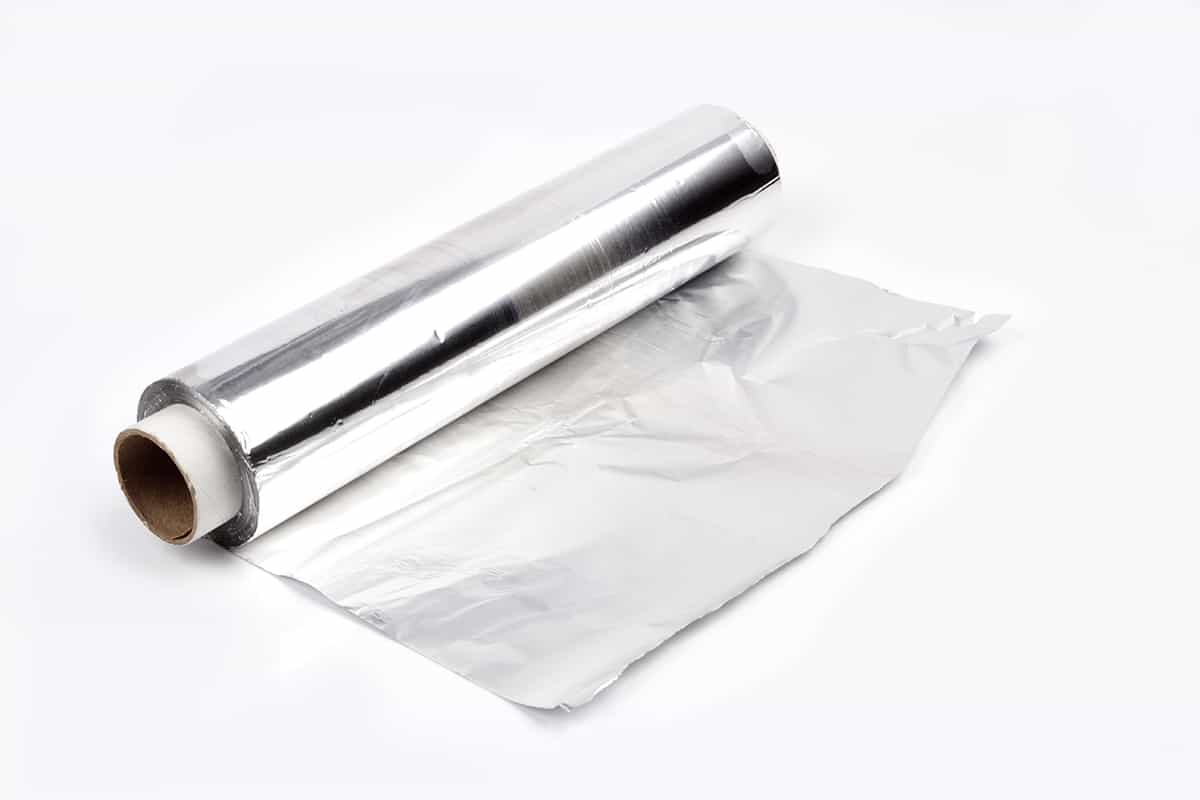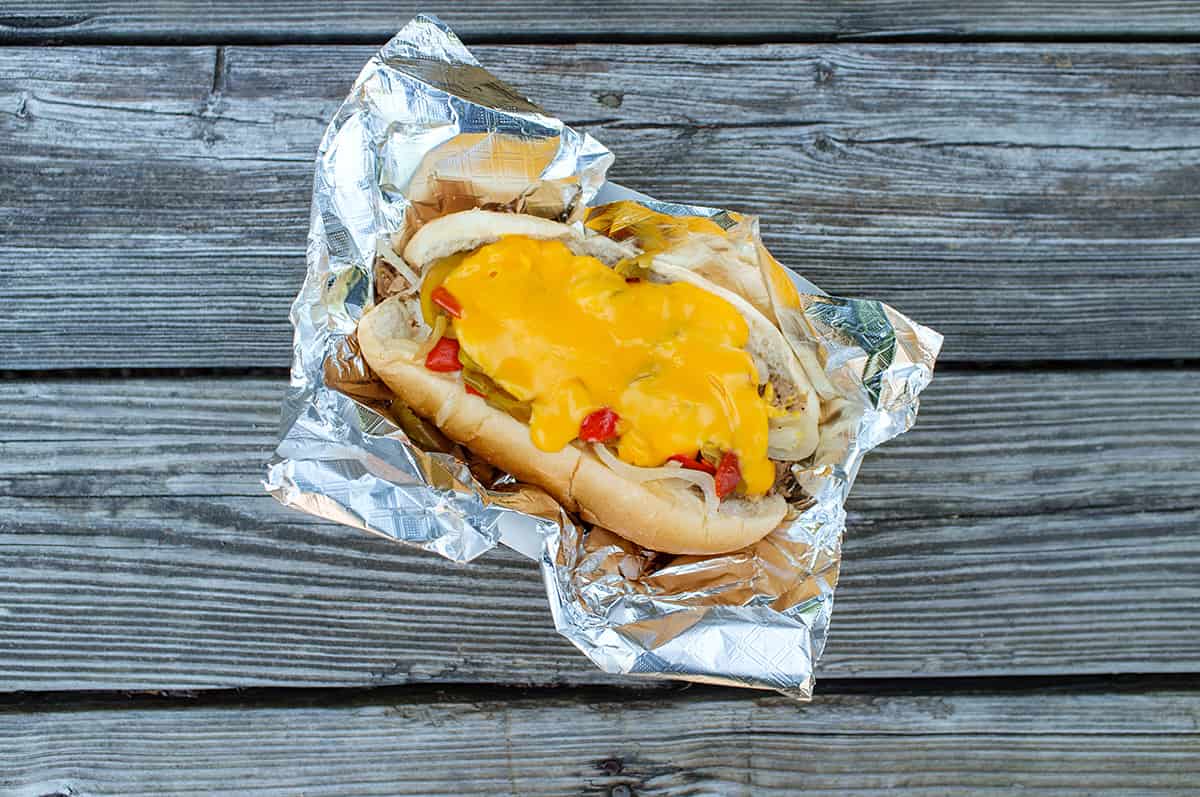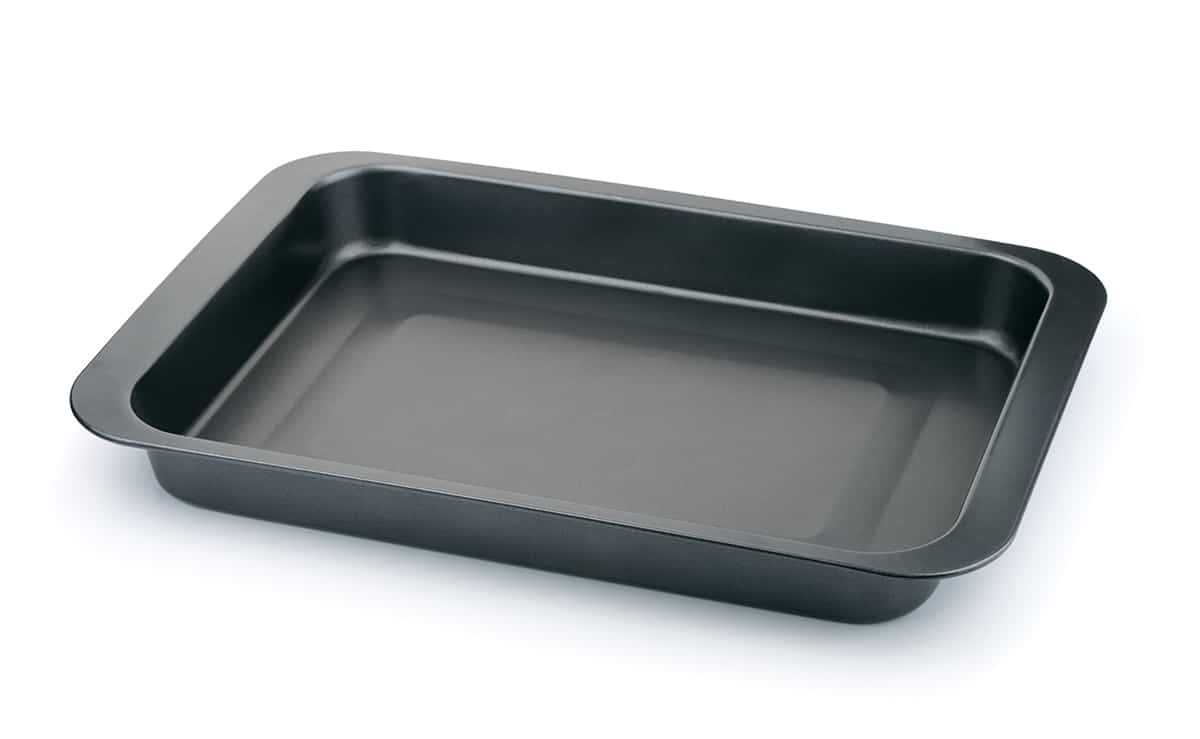Aluminum foil, which also goes by the moniker tin foil, is great for a million things, such as preventing moisture from escaping roasted turkey and covering sandwiches. But if you’re worried about what overusing tin foil can do, perhaps you’d be interested in learning about its alternatives.
There are all sorts of kitchen supplies you can use in place of tin foil. For instance, you can use silicone baking mats to line baking sheets, parchment paper to tent food, or even a grill basket to crisp up roasted potatoes and poultry.
There are several more alternatives you should know about. In this guide, I’ll explain the various substitutes for tin foil for baking and grilling in an oven and why you should avoid using tin foil.
What Is Tin Foil?

Although tin foil and aluminum foil are used interchangeably, there are vastly different from each other.
Tin foil is made of tin, which isn’t a surprise. What might be surprising is that tin foil was more commonplace back in the 19th century. Tin was used in all sorts of packaging applications for products like cigarettes and gum. And just like aluminum foil is used today, tin foil was often used to store leftovers for the following day.
By the early 20th century, aluminum foil became the more popular product for household packaging. Aluminum, which is much cheaper than tin, became the go-to material for not just packaging purposes but also for cookware and all sorts of industrial applications. As the years went by, tin was eventually replaced by aluminum.
So, why do we still call it tin foil? Simply put, it’s a hangover of what our forefathers called it. So, in today’s day and age, if someone speaks about tin foil, they actually mean aluminum foil. For the rest of this guide, when I say tin foil, I’m actually talking about aluminum foil.
Is Tin Foil Bad for the Environment?

One of the best things about aluminum, apart from its relatively lower price tag as opposed to other common metals, is that it can be recycled indefinitely. In fact, about 65% of the aluminum used in America today underwent a recycling process, meaning that the pots and pans we have in our pantries right now are most likely comprised of old, recycled aluminum.
Aluminum foil is no different. As long as there are no permanent food stains or residues on the foil, it can undergo the same recycling process as aluminum rims, wires, and furniture frames.
So, with all this said, what’s the big deal about using tin foil?
An article from 2010 described the toxicity of aluminum foil on our environment. Basically, compared to plastic, aluminum foil should be reused at least 8 times in order to be more eco-friendly. Do you remember the last time you reused the same sheet of aluminum foil when baking cookies 8 times? I certainly don’t.
For this reason alone, we should all make the eco-conscious decision to at least consider swapping out tin foil for its alternatives.
But if that’s not enough to scare you, perhaps ingesting aluminum foil will. Every time you use aluminum foil to line baking sheets or wrap sandwiches, trace amounts of the metal make their way into our food. The good news, if you want to call it that, is the tiny quantities of aluminum may not be too harmful. The bad news is that over time, you might have ingested more aluminum than you thought, which was zero.
Speaking of which, what are the alternatives to tin foil?
What to Use Instead of Tin Foil in the Oven
Tin foil is usually used in the oven to cover casseroles and meats, as well as create a non-stick surface for baked desserts. As great as tin foil is at doing all of these things, there are alternatives that aren’t just better for the environment but may actually be better for our health in the long term.
Let’s take a look at some of the alternatives to tin foil in the oven.
Silicone baking mats
![]()
Unsurprisingly, a silicone baking mat is a baking mat made of silicone. This plastic/rubber naturally has non-stick properties, ensuring that your cookies, meringues, and vegetables slide right off after the oven’s timer goes off.
The downside of using silicone baking mats is that they don’t conduct enough heat to crisp the bottoms of cookies, meats, and vegetables. So, your roasted potatoes might come out of the oven with a slightly soggy bottom.
Parchment paper
Parchment paper is the only paper-based kitchen supply that is oven-safe. Unlike wax paper, parchment paper can withstand temperatures of up to 450°F without melting or catching fire. And just like silicone baking mats, parchment paper is an anti-stick liner for baking mats.
Another huge advantage is that you can fold and crease parchment paper into any shape you want. So, you can use this paper to cover casseroles and meats, as well as line the walls of round pie and cake pans. The downside is that parchment paper doesn’t promote crispiness.
Grill basket
I don’t have to tell you that a grill basket is a basket used for grilling meats—it’s right there in its name. What you might not know is that a grill basket doesn’t require any lining at all. All you have to do is place the basket on top of a baking sheet to capture any moisture that might have come off your grilled meats or vegetables.
Grill baskets can also withstand direct heat, making them perfect for outdoor barbecues. Best of all, because it’s made of metal (usually stainless steel), it will add much-needed crispiness to proteins and vegetables.
Non-stick baking pan

The main reason you would line a baking pan with tin foil is to keep your baked goods from clinging to the mold’s walls. Luckily, there are baking pans with a non-stick coating that already stops batter, dough, and meat from soiling its walls.
What you might already know about Teflon coating is that it’s not indestructible. Over time, especially when exposed to heat from all directions, the non-stick coating will peel off, leaving tiny sections on the pan that will tear off bits and pieces of your baked goodies.
Dutch oven
A Dutch oven is a perfect vessel for baking. It is made of cast iron and sometimes has an enamel, non-stick coating. Dropping a Dutch oven is more likely going to damage your kitchen floors than the pot itself.
One of the best things about Dutch ovens is that they can be used to crisp anything from breads to meats. You can transfer Dutch ovens from your stovetop to the oven to finish cooking steaks, or you can take a Dutch oven out with you on long trips into the wild. Just make sure you have a large enough bag to carry one of these massive pots!
Beeswax food wraps
Beeswax food wrap is an innovation of traditional wax paper. It’s reusable, made of all-natural ingredients, and it sticks to the brim of jars, pots, pans, plates, and baking dishes. They’re also biodegradable, so when a food wrap is past its prime, you don’t have to worry about it polluting a landfill somewhere. However, since beeswax food wrap is made of beeswax, it is susceptible to melting due to heat.
As such, beeswax food wraps are the ideal substitute for tin foil sandwich wrappers, not baking. Also, you shouldn’t wash this food-grade wrap in hot water since it will melt between your fingers.






